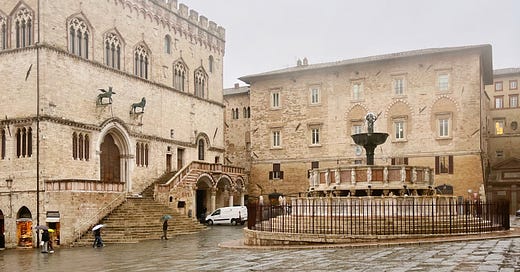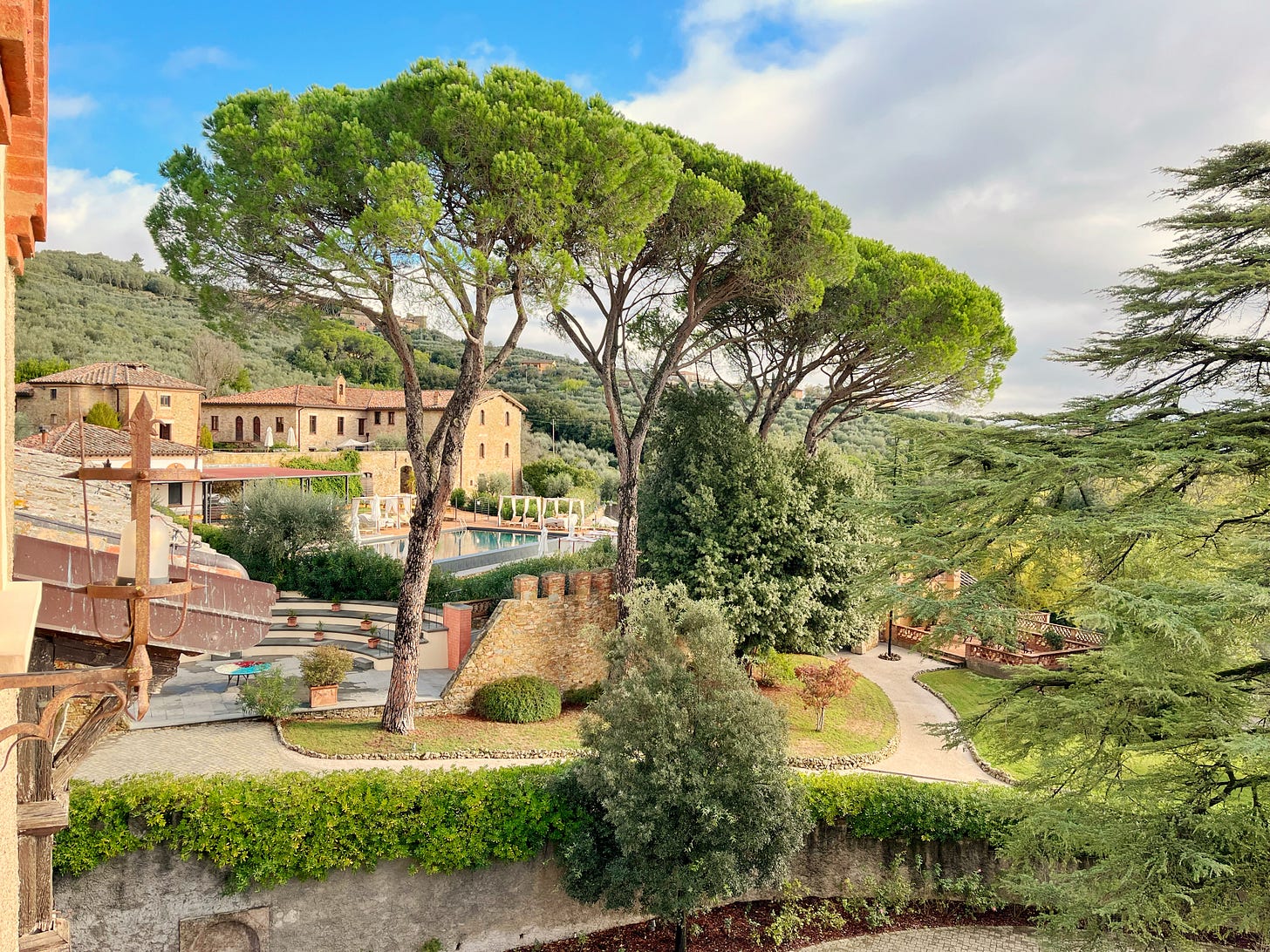Welcome to the New Roman Times’ 72 Hours series! Why 72 hours? Because the New York Times publishes a “36 Hours” series, but in my opinion, 36 hours isn’t nearly enough time to spend in Italy’s greatest cities and most compelling regions. From time to time, I’ll spotlight popular destinations like Rome, Milan, Florence, the Amalfi Coast, Capri, and Venice for paid subscribers. Have a place you’d like a 72 hours guide to? Email newromantimes@substack.com or leave a comment here!
The capital of Umbria—the region known as Italy’s Green Heart—Perugia tends to fly under the radar. It’s certainly not as popular as Rome, Florence, and Venice, but I think that’s part of its charm. A university city, Perugia may not have as many grand monuments as Italy’s more famous art cities, but it’s one of the best preserved Medieval cities in the country. It’s also known for chocolate—and next year, the Città del Cioccolato (i.e. Chocolate City), an experiential chocolate museum, is slated to open in Perugia’s historic covered market.
I first visited Perugia a couple of years ago during a stay at Vocabolo Moscatelli, a member of Design Hotels in a 12th-century monastery in the countryside. I’ve been back a couple of times since then, most recently last month, when I returned to the area on assignment for Travel + Leisure. I love how authentic and non-touristy the city is—compared to more crowded cities, it feels like a breath of fresh air.
With a population of just under 170,000, it’s one of Italy's smaller regional capitals. I think 72 hours is a reasonable amount of time to spend there. You can see quite a lot of the city while taking your time and enjoying it at a slower pace. It makes a great weekend getaway from Rome or Florence or the ideal stop on a trip through central Italy. Here’s how to spend your time there.
DAY ONE
Arrive and get your bearings while easing into a slower pace in Umbria.
3 pm - Arrive and check into your hotel
Depending on where you’re coming from and where you decide to stay, you might arrive by car or train. If you want to stay right in the center of town, in walking distance of the main attractions, book a room at Sina Brufani, which celebrated its 140th anniversary this year.
If you don’t mind a bit of a drive, though, there are a handful of hotels within a 30-45 minute radius of the city that are quite charming and offer a more bucolic rural experience. Castello di Reschio is the farthest but also the most impressive in terms of architecture and design. Vocabolo Moscatelli is a bit more intimate and is run by a lovely young couple. Borgo dei Conti, where I stayed on my most recent trip, is the closest and might be my personal favorite. Occupying the estate of Count Lemmo Rossi Scotti, a 19th-century painter, it has the air of a fairytale about it.
4 pm - Time to unwind
After a journey, it’s nice to take a bit of a breather. Luckily, no matter which hotel you choose, you’ll have ample chances to unwind. If you’re staying at Castello di Reschio or Borgo dei Conti, you should head down to the spa. The former has a subterranean bathhouse beneath the castle as well as an outdoor pool, while the latter has a spacious spa with sauna and steam rooms, an indoor jacuzzi, Himalayan salt room, and two outdoor pools. Meanwhile, Vocabolo Moscatelli has an outdoor pool that’s lovely in the summer and Sina Brufani has an indoor pool with glass panels that let you gaze down at Etruscan ruins below.
Keep reading with a 7-day free trial
Subscribe to The New Roman Times to keep reading this post and get 7 days of free access to the full post archives.






